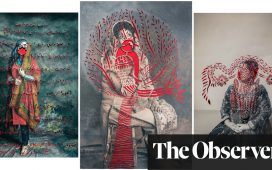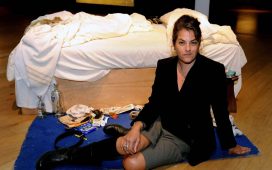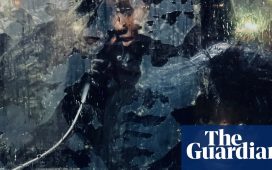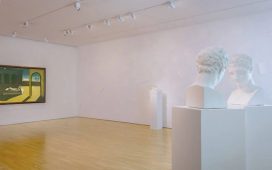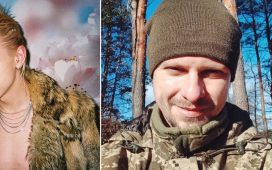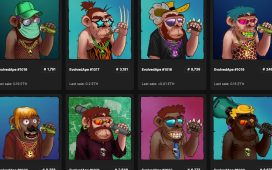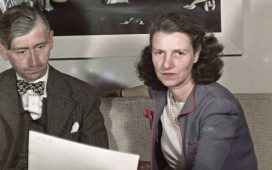There are no “stunning sunsets” in the work of Rennie Ellis, or “breath-taking” views. He never said, “There are no words”. If he witnessed something unusual, he wouldn’t have said, “It was like a movie”. Rennie hated flat, meaningless language and cliches, whether in his photography or his writing. And he never took a single cliched shot.
All of this helps to explain why Rennie has been described as one of Australia’s “most prolific and gifted social documenters”. He was an original. He didn’t care for the wide shot; he was about photographing the look on a face; the unposed moment of elation, excitement, apprehension. Someone showing off, someone bored.
These thoughts struck me when I recently went to the State Library of Victoria to see Melbourne Out Loud: Life through the lens of Rennie Ellis.
Rennie, who died in 2003 aged 62, was a brilliant Melbourne identity who photographed the city for decades. No event was complete without him. (Nearly a cliche there, sorry Rennie.) But while he loved Melbourne, Rennie took his camera everywhere. I was fortunate to watch him in action many years ago in Italy and northern Africa when we travelled together for a few weeks.
On one luminous blue day in Capri, we climbed up a seemingly never-ending set of steps and arrived at the ruins of Emperor Tiberius’s Villa Jovis. When you’re sitting at the edge of an emperor’s beach shack with a bowl of spaghetti vongole in front of you, it’s hard to get to your next commitment, especially when your lunch companion is Rennie. We lost track of time and missed a press briefing, which earned us a sharp dressing down – but it was worth it.
In Tunis we wandered through the markets and stopped at a cafe. Watching people walking by wearing the most sublime colours, Rennie’s eyes darted around, his camera on the table next to our espresso glasses. I wish I’d seen the photos he took that day.
Travelling with Rennie underlined that the best travel photography doesn’t have to be churches and monuments. Everybody’s got those shots. But Rennie shot anything that caught his eye: the human moment, a real emotion, daily life. The small details that tell a wider story.
Rennie’s work is powerful because it shows the ordinary. Sure, some of his photographs depict glamour, but they are often about the person standing next to the celebrity.
People were the stars. This is why Rennie’s photos have become a valuable record of our social history, about how we dressed, danced, loved, celebrated, barracked, protested and sunbathed. How we felt. How we reacted.
Just like everyone with an iPhone today, Rennie was never without his camera. He bowled up to people and asked if he could photograph them, including one day when I was with him on the Paris Métro. No one he approached said no, at least when I was there. He had a business card, an infectious smile, a gentleness and genuine curiosity. That seemed enough.
The show at the State Library of Victoria is a superb encapsulation of Rennie: his sense of humour, his mischief and his interest in people, on the street, at the beach, at the Melbourne Cup, the Grand Final, at a fashion show or on a dancefloor.
There’s Chris Bailey of The Saints playing with a young Nick Cave in the front row of the crowd. There are cheer squads at the footy. There’s Richmond player Robbie McGee sitting on the ground at the MCG, having a smoke after a game.
There’s Molly Meldrum riding a bike and wearing some sort of cape; there’s Sir Rod Carnegie dancing; there’s wildly dressed revellers at Inflation when that King Street nightclub was at its louche peak.
Celebrities were OK, if they were in situ. But it was regular people Rennie enjoyed photographing most. Some of them probably couldn’t understand why Rennie was so interested in taking their photo. They might not have thought they were important enough. They couldn’t know their image would one day tell a great story; to be frank, neither could many photographers.
But years later, it’s clear that the stories he told with his camera connect strongly with us today. It’s the thrill of the familiar, the recognition of the fashions or the hair or sometimes the backdrop. That’s us.
I bumped into Rennie at a cafe in Fitzroy a year or so before he died. As ever there was the huge smile, the tangled mop of long hair, the stories at the ready. We cackled about getting into trouble that day in Capri. The questions tumbled out. He was always more interested in talking about someone other than himself.
His death was a shock to a city that was so used to seeing him everywhere. He seemed so full of life and energy. Melbourne – and Australia – was so much poorer for this loss.
But his photos live on. We should all take a bit of a Rennie with us when we travel. Don’t shoot the sunset: find a face or two.
Rennie’s images are priceless. He knew that. It just took the rest of us a while to catch up.

